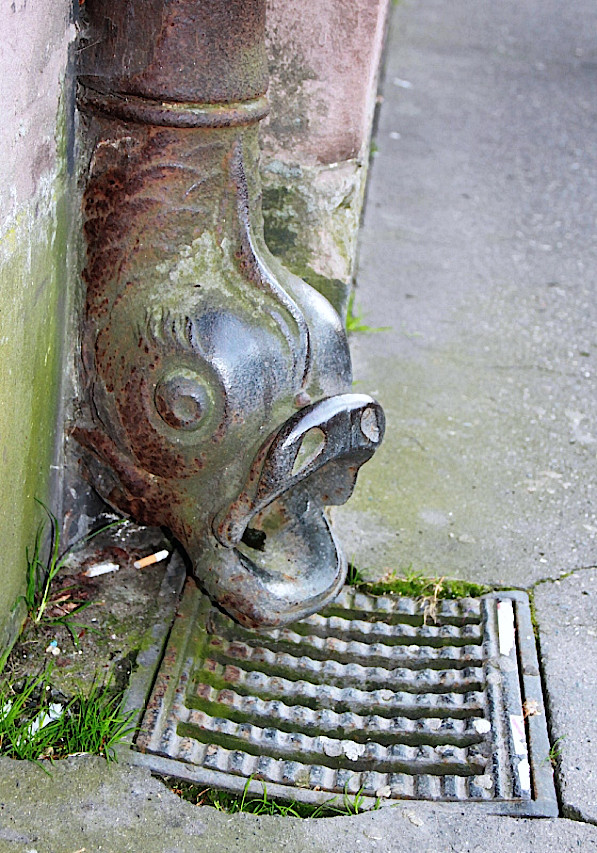Rohan Palace, Strasbourg
Palais Rohan is one of the main architectural gems of Strasbourg, a masterpiece of the French Baroque. It was built in the thirties of the eighteenth century as the residence of Cardinal Armand Gaston Maximilian de Rohan - Soubise. The project was commissioned by architect Robert de Cotte and presented in 1727, construction was carried out from 1732 to 1742 under the direction of municipal urban planner Joseph Massol. The building is built of yellow sandstone, some of the walls and elements of the courtyards are made of pink. The facades and interiors are decorated with sculptures by Robert Le Lorrain and Johann August Nahl, and the murals were painted by Pierre - Ignace Parrocel and Robert de Séry. The initial construction estimate called for the cost of 344 thousand French livors, but by the time it was completed, the cost was about one million.
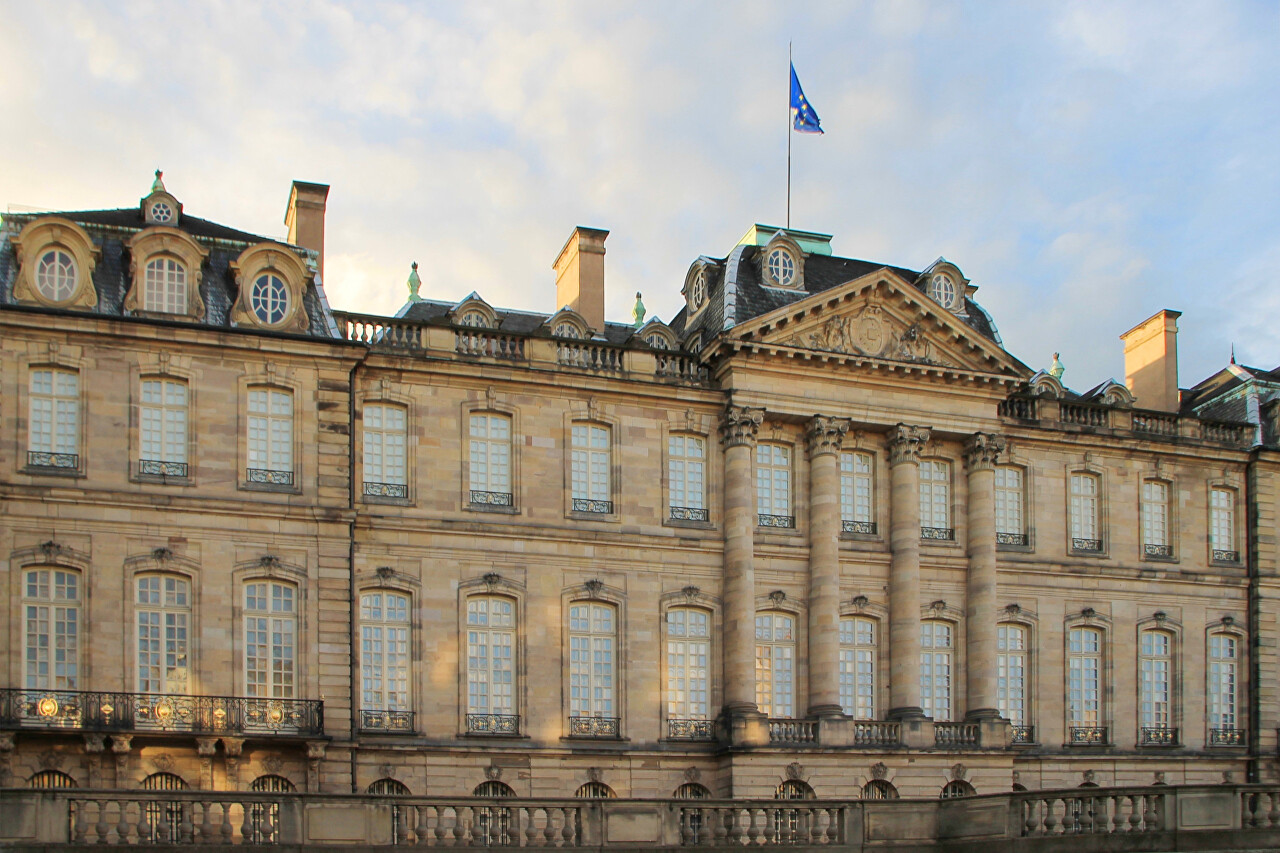
After the French Revolution of 1789, the building was confiscated into state ownership and put up for auction. In 1791, the palace was acquired by the authorities of Strasbourg, and for more than a hundred years the city hall was located here. For a couple of years, "servants of the people" sold out almost all exclusive furniture and art objects (apparently, this is typical for all revolutionary authorities), many unique murals were destroyed as a result of repairs and alterations.
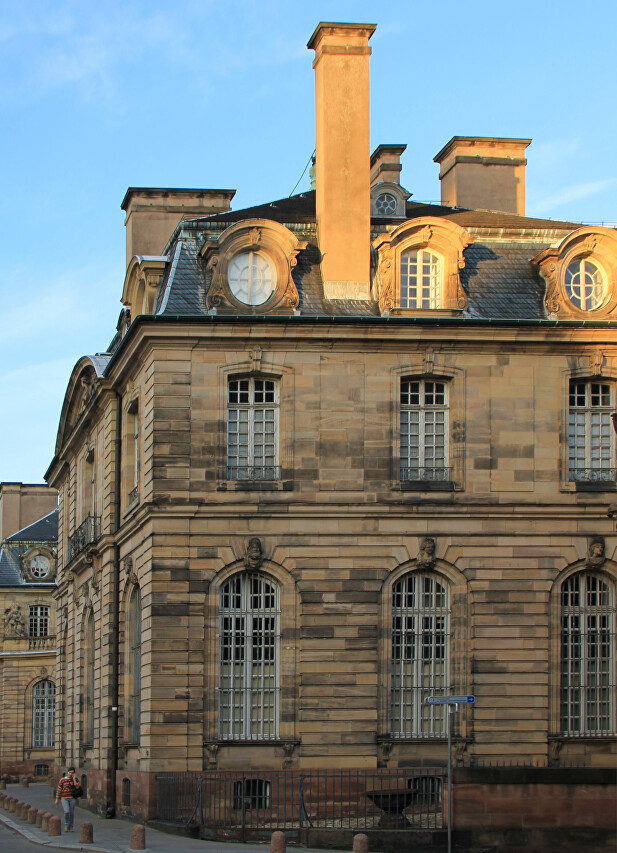
As a result of the Franco-Prussian War of 1870, Alsace was annexed by Germany, and from 1872 the palace was used as the administrative building of the Kaiser-Wilhelm University, and the university library was located here. In 1895, the Rohan Palace returned to the city property, and the palace's premises housed expositions of three museums at once - the archaeological museum (in the basement), applied and fine arts.
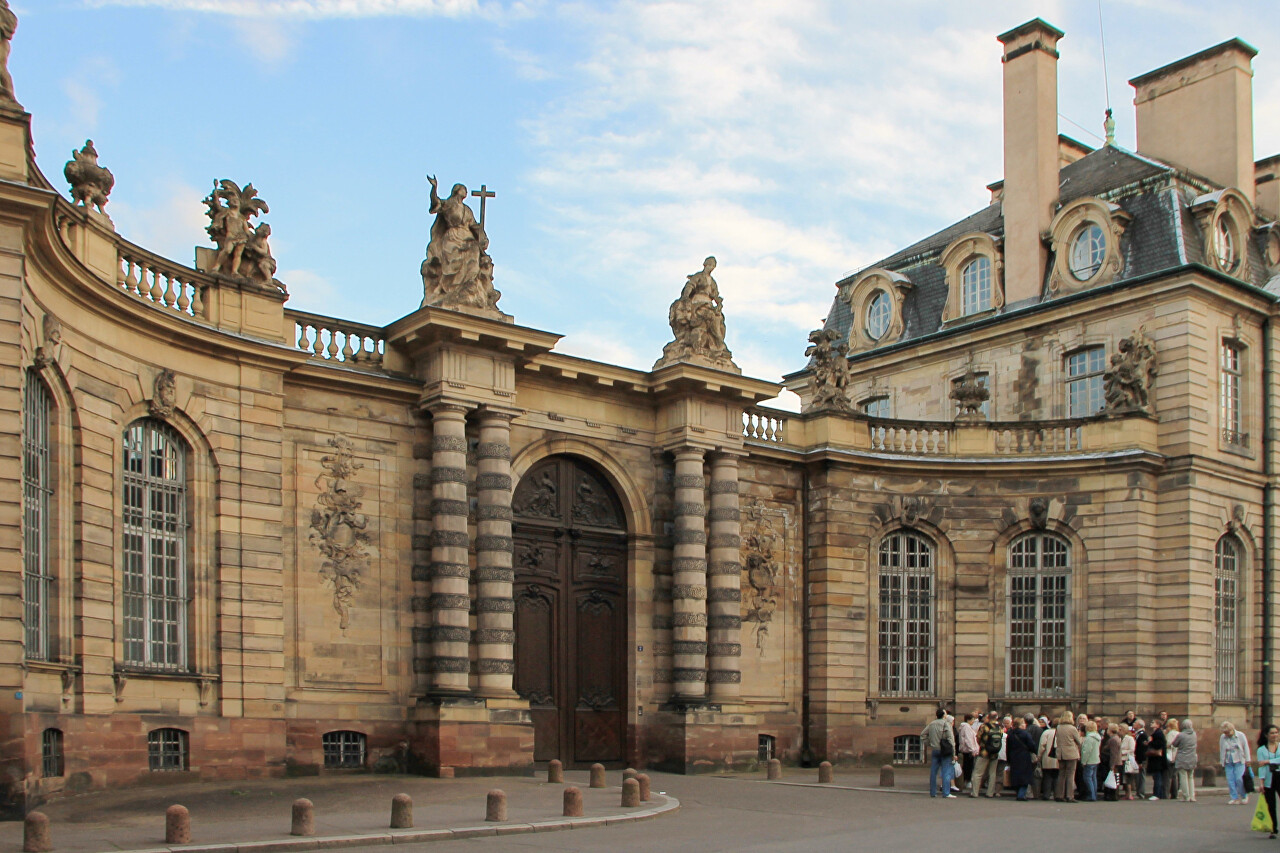
On August 11, 1944, the building was badly damaged by Allied air bombs. After the war, under the direction of architect Bertrand Monnet, restoration of the palace began, but in 1947 a fire broke out, destroying a significant part of the collection of the Museum of Fine Arts. The fire was caused by burners that were used to dry the premises, after the roof and ceiling were damaged by bombs, the building suffered from dampness. Most of the work was completed in the fifties, but the restoration of interiors and exhibits continued until the nineties of the last century.
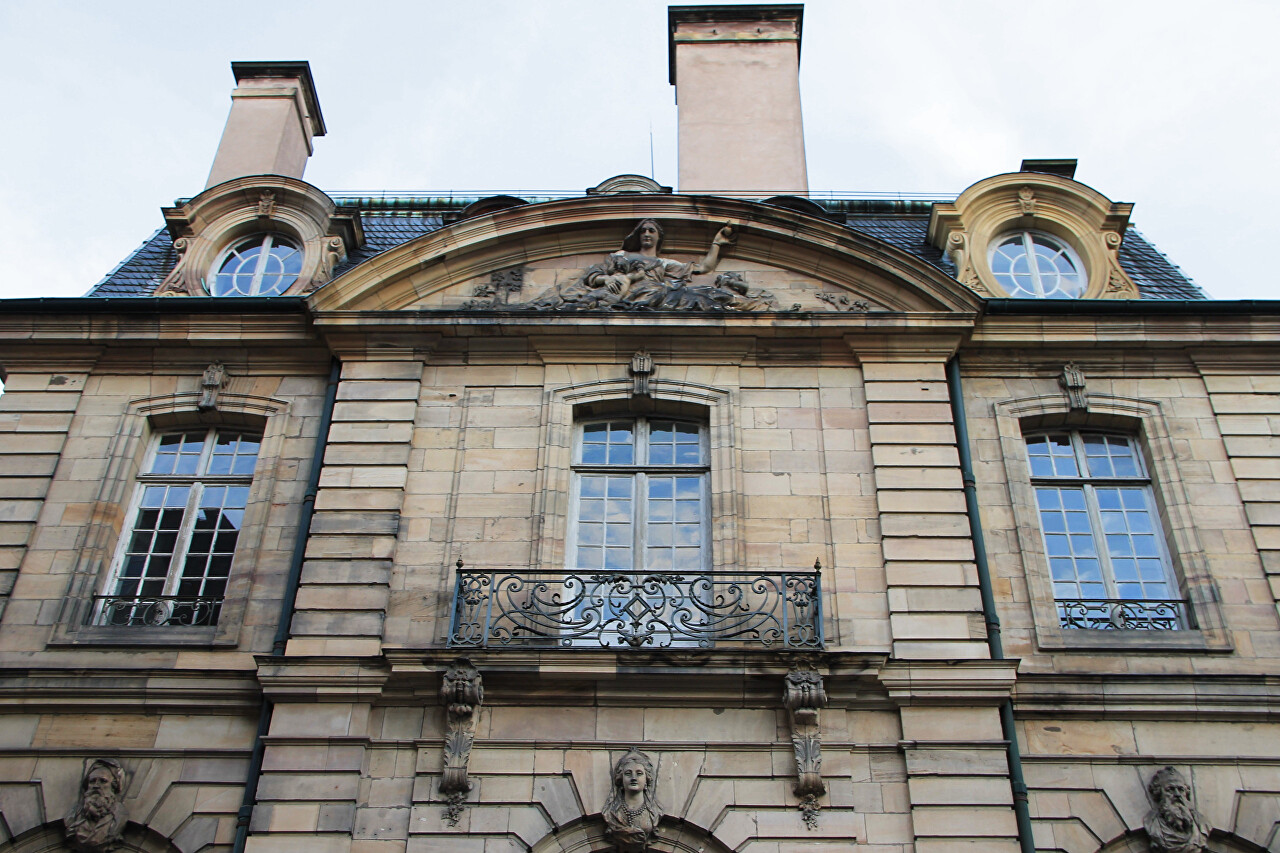
During its more than two-hundred-year history, the Rohan Palace has been visited by many historical figures: King Louis XV stayed here for five days in October 1744, and Queen Marie Antoinette spent the first night on French soil in May 1770. In 1805, 1806 and 1809, the palace was visited by the Emperor Napoleon. Recent events include a "family" meeting between the presidents of France and the United States, Nicolas Sarkozy and Barack Obama.
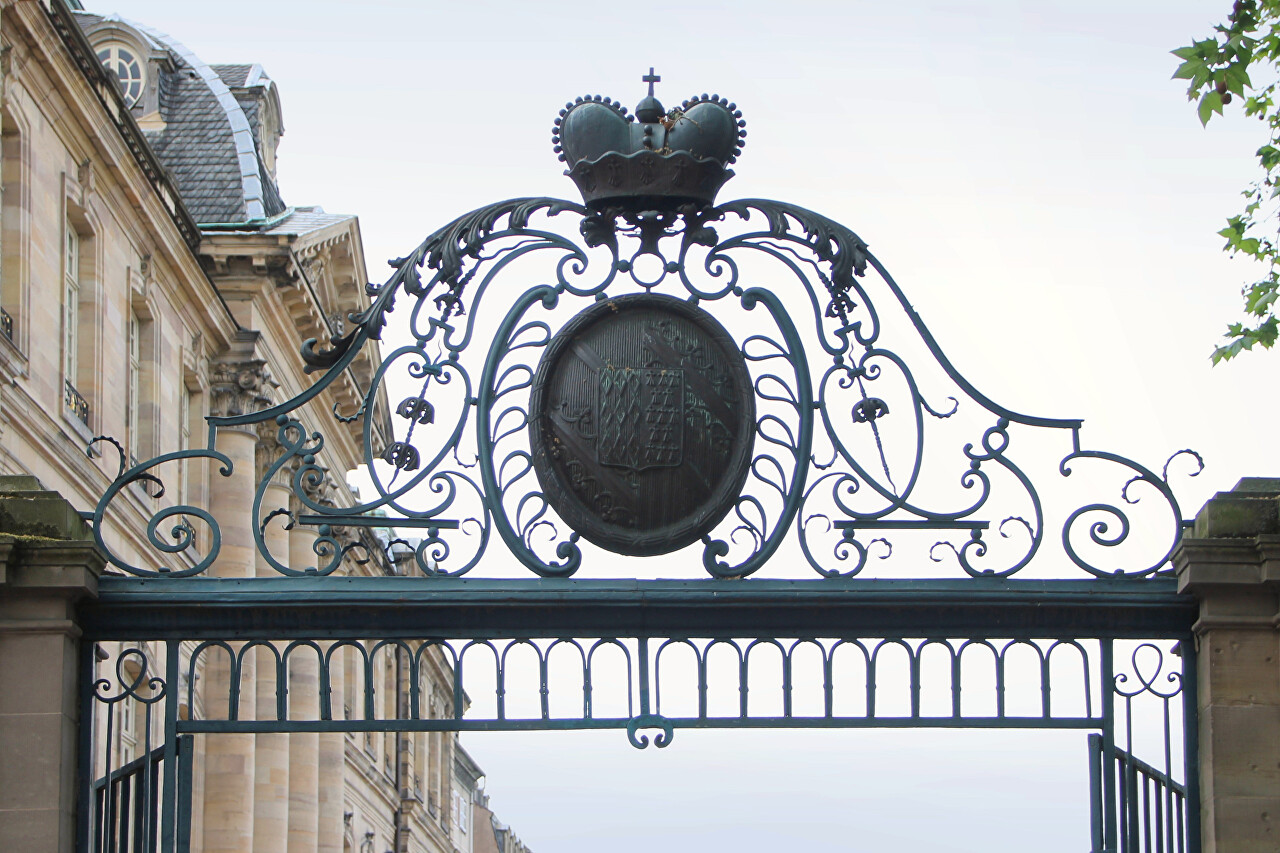
In front of the facade, facing the river, is a wide Rogan terrace, with small shady squares around the edges.
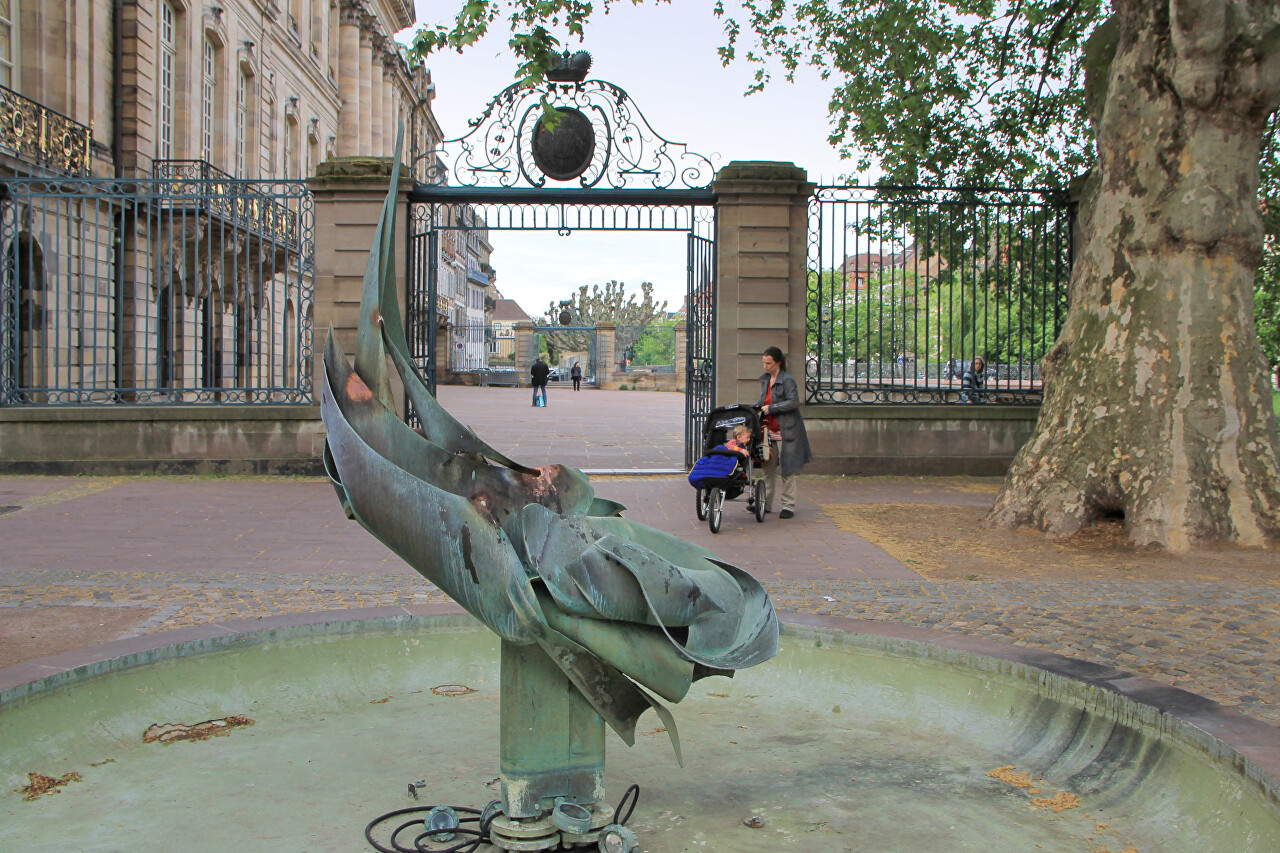
A door with carved floral patterns and a molded knocker handle.
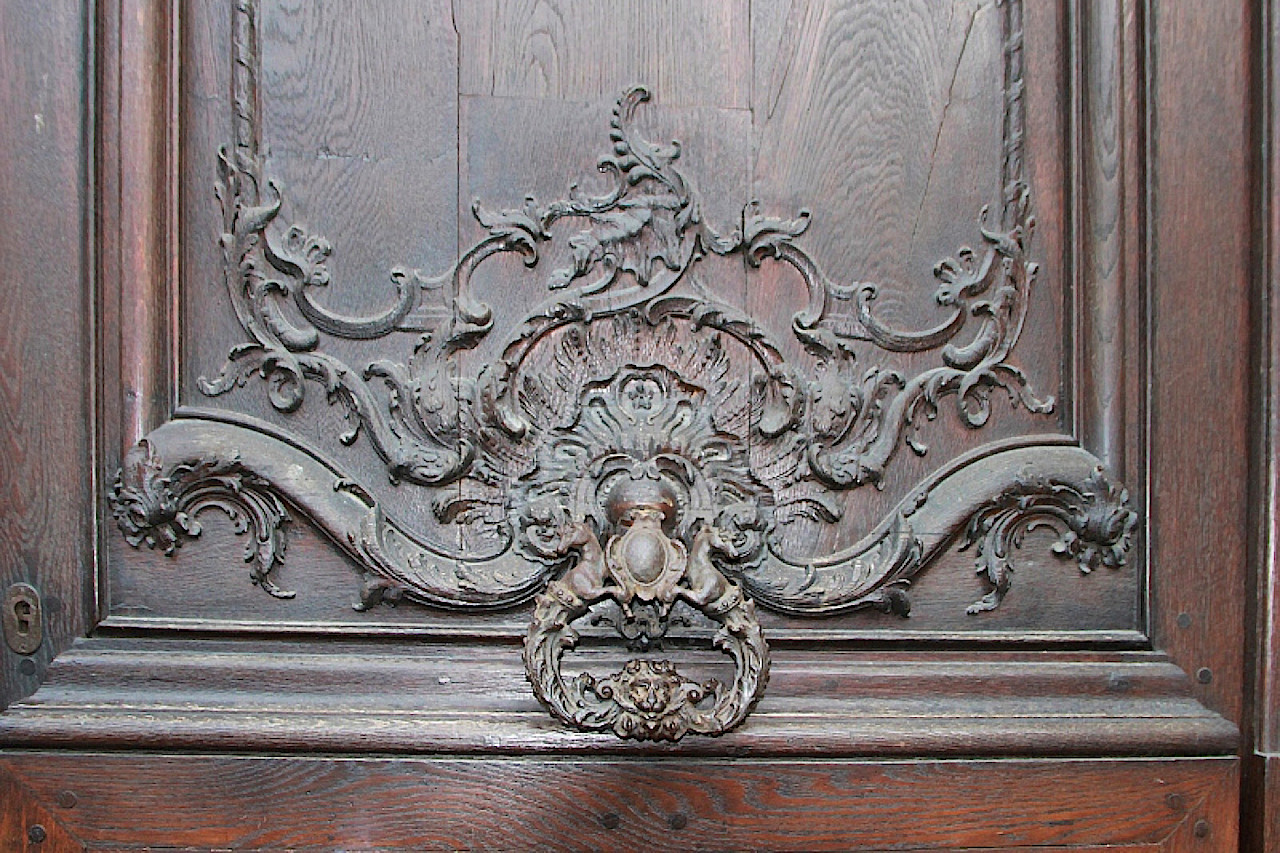
Cast iron gutter drain in the form of a fish head. There is a storm sewer grate under the gutter, so water from the roofs does not flood the sidewalk.
